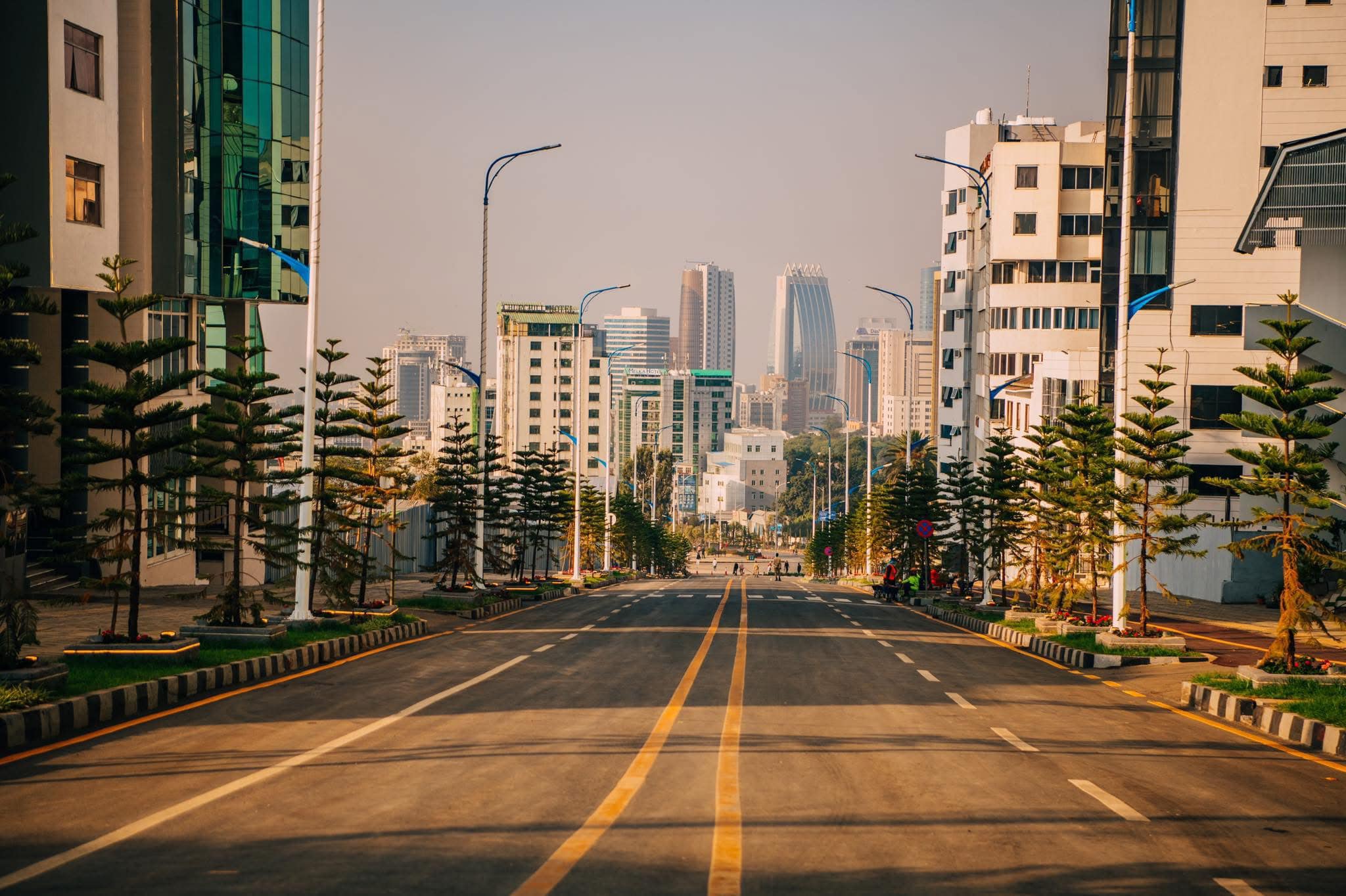Addis Ababa Undertaking Rapid Transformation - ENA English
Addis Ababa Undertaking Rapid Transformation

By Gezahagne Degefu
Recognizing the daunting challenges facing Addis Ababa city—be they roads, green areas, public spaces, and housing facilities and so on, Prime Minister Abiy Ahmed set landmark precedent by launching initiatives to transform the old face of the capital city.
The face of Addis Ababa has changed over the last seven years by leaps and bounds. Given the growing needs of urbanization globally, the residents of the city deserve modern city.
To this effect, the corridor development— renovation of infrastructure facilities are fundamental to connect communities through well-planned roads and pathways, improving transportation and accessibility.
The corridor development has expanded streets, essential routes and dedicated cycling lanes for sustainable transportation. There are also long kilometers of meticulously designed walkways to encourage walking within the urban environment of the city.
City mayor Adanech Abebie believes that the large network of pedestrian pathways will greatly help the residents—motorists, cyclists, and pedestrians, ensuring that urban areas are more accessible to all class of citizens.
Housing development projects have also been carried out to address the urgent needs of housing in many urban centers of the city. The projects focus on building affordable housing for low-income residents, providing access to safe and suitable living conditions. For instance, the housing project being underway in Kazanchis area is expected to develop 15,000 homes. This initiative is implemented under public private partnership (PPP). It helps residents with low income to accommodate homes.
The housing development initiative also seeks to support basic living conditions and allow individuals and families to thrive. Local authorities are focusing on improving quality of life by enhancing amenities like clean public restrooms, green spaces, safe playgrounds, and recreational centers.
In addition to these efforts, the corridor project also revitalized river side areas within the city with the goal of transforming these waterways into vibrant green areas for the community. This initiative also emphasizes sustainable design practices that not only beautify the area but also promote environmental stewardship and community well-being.
Various tree planting programs have also been meticulously implemented to enhance the greenery of the city. In addition, numerous parks have been developed to provide recreational spaces for the community.
The corridor development projects aimed to revitalize slum areas. For instance, Arat Kilo and Meskel Square have been renovated by preserving their historic importance, while Entoto is being carefully restored to celebrate its cultural heritage. The Piassa urban centre has also been revitalized and become splendid.
The city administration has launched strategic initiatives to create a favorable investment climate, leading to increased domestic and foreign investment, especially in tourism and service sector.
Modern projects like the Addis International Convention Centre highlight the blend of modern facilities with Ethiopia’s rich traditions.
City planners emphasize that this combination of historical elements and contemporary urbanizations are essential for maintaining the unique identity of Addis Abeba. They describe such types of facilities as an indicator of urban expansion that reflects the city's cultural heritage.
By engaging investors and stakeholders, the city administration aspires to steer the transformation of Addis Abeba in a manner that is inclusive and benefits the entire community.
Families who were previously residing in substandard housing conditions are now making a transition into urban life style. Modern urban centres are emerging in Addis Ababa. The residents of Addis Ababa started enjoying a dignified life, with well-maintained roads, educational institutions, and essential utilities. The playgrounds are bustling with activity, sports facilities are frequently utilized, and contemporary amenities foster a lifestyle that encourages and supports healthy living.
For instance, boys and girls of Kazanchis and its surrounding areas have begun to experience holistic development. They are now breathing fresh air, playing in expansive, clean fields, receiving education in convenient schools, and enjoying a healthy and fulfilling childhood.
Residents actively maintain public spaces and collaborate with local governments on projects, promoting cooperation and shared responsibility.
Public spaces are perceived as communal areas which are a long-awaited dream for the residents of Addis Ababa. Almost no public spaces were available earlier in the crowded and confined areas of the city. So the transformation undertaken by the leadership of Addis Ababa raises the city to international standard.
For instance, various digital technologies have been launched to provide delivery of government services, ensuring that residents receive the services they require in a more efficient and accessible manner. Office and business hours are also extended to foster productivity and economic activity.
In short, Addis Ababa has a lot to offer. Without exaggeration, the city is worth visiting. It has a lot to share with African cities— its valuable experiences for the collective growth and improvement of urban life across Ethiopia and beyond.